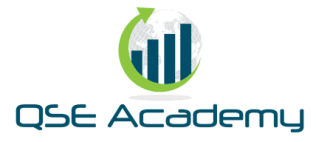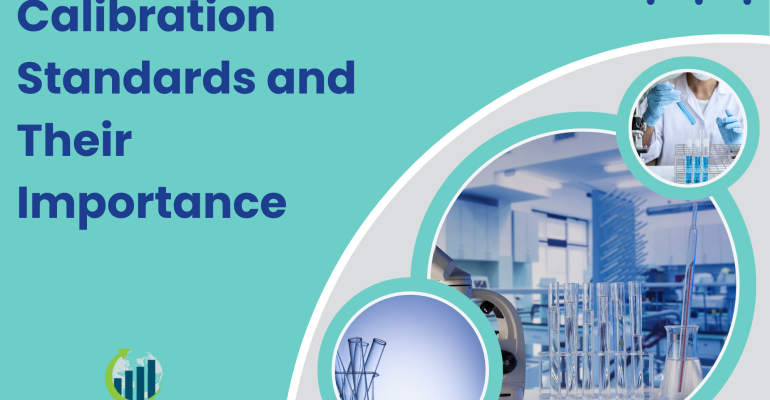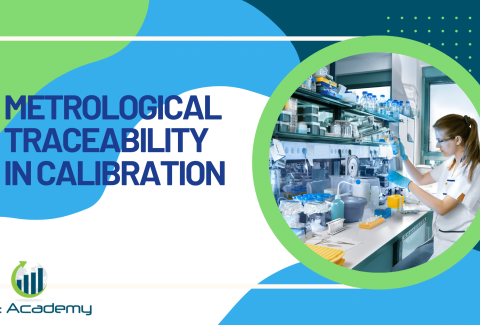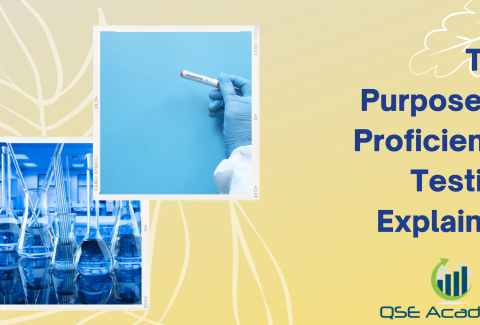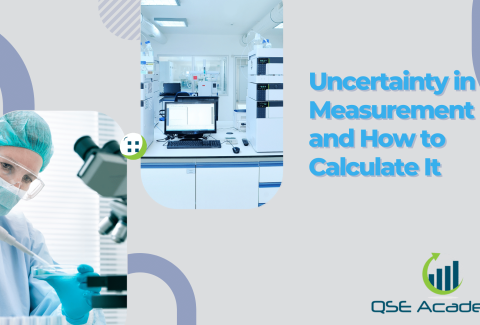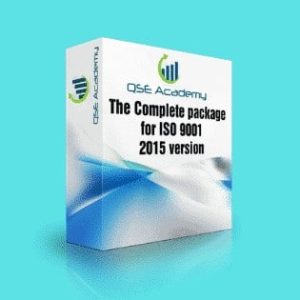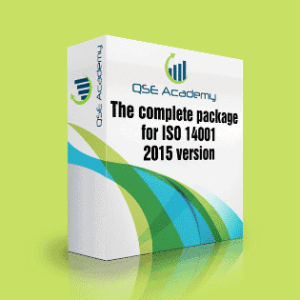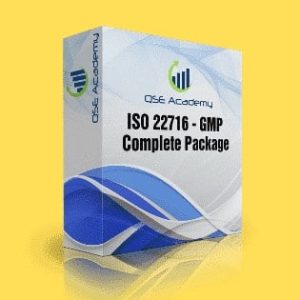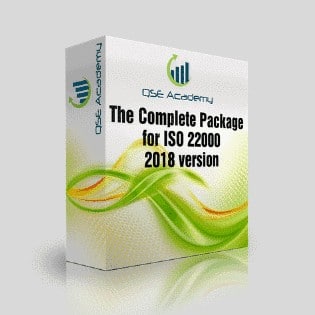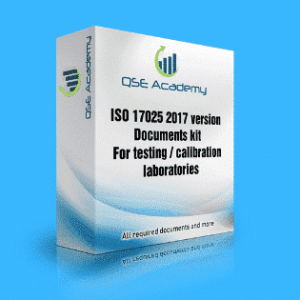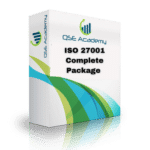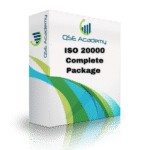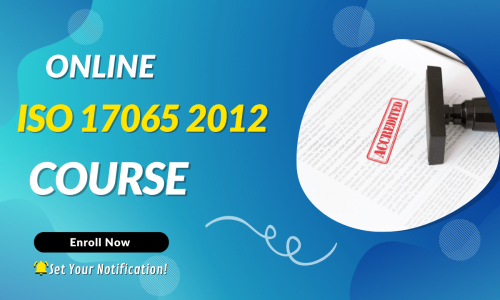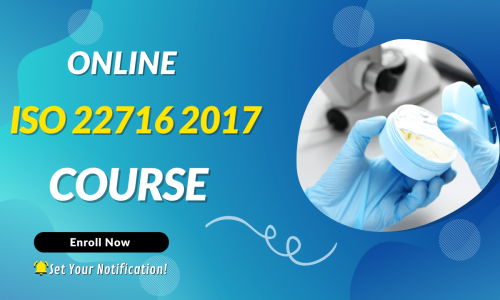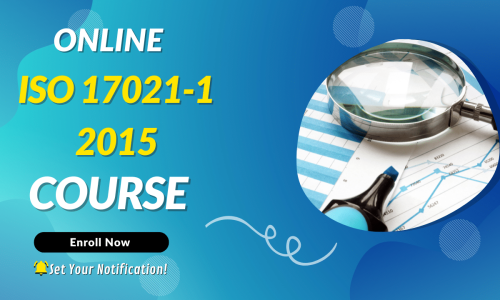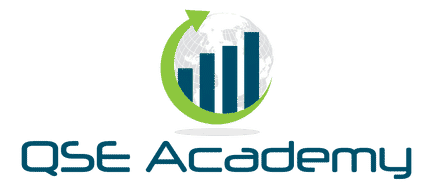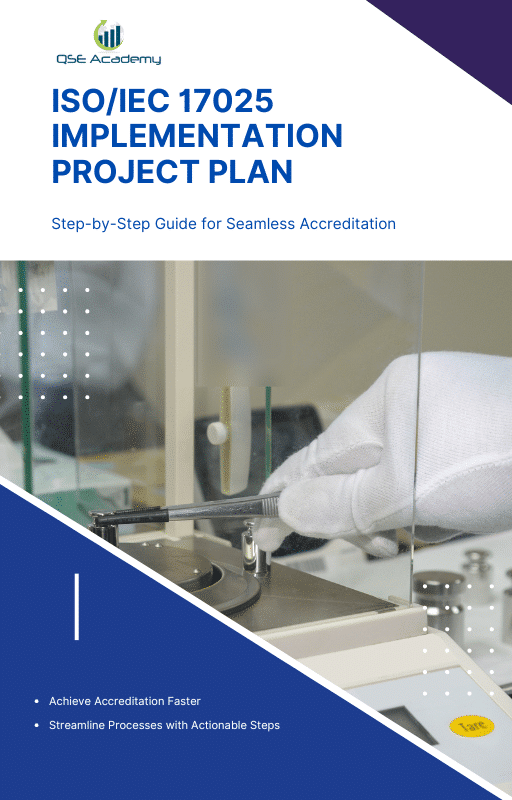Calibration Standards and Their Importance
Calibration Standards and Their Importance
Have you ever wondered how measuring instruments stay accurate over time? Whether it’s a simple kitchen scale, a medical thermometer, or a high-tech industrial sensor, all measurement tools can drift from their original accuracy. That’s where calibration standards come in—they are the trusted reference points that ensure measuring devices remain precise and reliable.
Without proper calibration standards, industries like healthcare, aerospace, and manufacturing would face serious risks. Imagine an aircraft’s fuel gauge giving incorrect readings or a medical device miscalculating a patient’s vital signs. The consequences could be costly—or even dangerous. That’s why companies follow strict calibration standards to verify and adjust their instruments, ensuring they always provide accurate measurements.
In this article, we’ll explore what calibration standards are, why they’re essential, and how they impact different industries. We’ll also dive into best practices for using calibration references correctly and discuss the latest trends in calibration technology. Whether you work in a lab, a factory, or any field that depends on accurate measurements, understanding calibration standards is key to ensuring precision and quality. Let’s dive in!
What Are Calibration Standards?
Let’s break it down—what exactly are calibration standards, and why are they so important?
In simple terms, calibration standards are highly accurate reference materials or instruments used to verify and adjust the accuracy of measuring devices. They serve as the “gold standard” for measurements, ensuring that equipment stays reliable over time. Without proper calibration standards, measurements could drift, leading to errors in industries where precision is critical—like healthcare, aerospace, manufacturing, and scientific research.
Think of it like this: if you were baking a cake and your measuring cup was slightly off, your entire recipe could be thrown off balance. The same principle applies in laboratories and industries. A miscalibrated scale in a pharmaceutical lab, for example, could result in incorrect drug formulations, while an inaccurate pressure gauge in an aircraft could lead to safety risks. This is why using trusted calibration standards is essential for ensuring every measurement is as precise as possible.
Different Types of Calibration Standards
Not all calibration standards are the same—there are different types based on the level of precision required and their role in the calibration process.
1. Primary Calibration Standards
These are the highest level of calibration standards, maintained by national and international metrology institutes such as the National Institute of Standards and Technology (NIST) in the U.S. and the National Physical Laboratory (NPL) in the UK. They provide the ultimate reference for all other calibration processes.
2. Secondary Calibration Standards
These are derived from primary standards but used in industrial calibration settings. While slightly less precise than primary standards, they still maintain a high level of accuracy and are often used in accredited calibration labs.
3. Working Calibration Standards
These are the everyday calibration standards used for routine equipment checks. While not as precise as primary or secondary standards, they are traceable back to those higher levels to ensure accuracy. Examples include certified weight sets, reference thermometers, and gauge blocks used in manufacturing.
Why Do Calibration Standards Matter?
The role of calibration standards goes beyond just keeping measurements accurate. They ensure consistency across industries, help businesses comply with regulations like ISO 9001 and ISO 17025, and ultimately improve product quality and safety.
In the next section, we’ll explore why calibration standards are so essential and how they impact different sectors. Stay tuned!
Why Are Calibration Standards Important?
Now that we know what calibration standards are, let’s talk about why they’re so important. After all, does it really matter if a measurement is slightly off? The answer is a resounding yes!
In industries where precision is critical—such as healthcare, aerospace, and manufacturing—small measurement errors can lead to big problems. Imagine an airplane component that’s just a fraction of a millimeter out of spec or a medical device that gives an inaccurate reading. In both cases, the consequences could be serious. That’s why calibration standards are used to ensure accuracy, consistency, and compliance.
Ensuring Accurate Measurements
No measuring instrument stays perfectly accurate forever. Over time, equipment can drift due to environmental factors, regular wear and tear, or even minor handling mistakes. Calibration standards help correct these deviations by providing a precise reference point, ensuring that every measurement remains reliable.
For example:
- A calibration standard weight ensures that laboratory balances provide correct readings.
- A temperature calibration standard verifies that thermometers measure heat levels correctly.
- A pressure gauge calibration standard ensures accuracy in industrial machines.
Without calibration standards, businesses would have no way of knowing whether their instruments were reading correctly, leading to inconsistent results and potential quality issues.
Compliance with Industry Regulations
Many industries follow strict quality and safety standards that require regular calibration. Organizations like ISO (International Organization for Standardization), FDA (Food and Drug Administration), and ASTM (American Society for Testing and Materials) mandate the use of calibration standards to ensure reliability.
For example:
- ISO 9001 requires companies to use properly calibrated measurement tools to ensure product quality.
- ISO 17025 mandates traceable calibration standards for testing and calibration laboratories.
- Good Manufacturing Practices (GMP) in pharmaceuticals require precise calibration of production equipment to prevent contamination or incorrect dosages.
By using traceable calibration standards, companies can pass audits, avoid regulatory penalties, and maintain their reputation for quality.
Improving Product Quality and Safety
Accurate measurements aren’t just about meeting standards—they also ensure that products are safe and perform as expected. Whether it’s a medical device, an airplane part, or a food processing system, calibrated equipment prevents defects and reduces risks.
Consider these examples:
- In the automotive industry, a miscalibrated torque wrench could result in bolts that are too loose or too tight, compromising vehicle safety.
- In pharmaceuticals, an inaccurate scale could lead to incorrect ingredient measurements, affecting drug effectiveness.
- In aerospace, a small calibration error in navigation instruments could lead to miscalculations in flight paths.
By using calibration standards, businesses ensure that every product meets safety and performance expectations.
Final Thoughts on the Importance of Calibration Standards
At the end of the day, calibration standards aren’t just about numbers—they’re about trust. They give businesses confidence that their measurements are accurate, their products meet quality requirements, and their processes comply with industry regulations.
Next, let’s explore how calibration standards are applied across different industries and why they are essential for everything from food safety to high-tech engineering!
How Calibration Standards Are Used in Different Industries
By now, we know that calibration standards are essential for keeping measurements accurate, ensuring compliance, and maintaining safety. But how exactly do different industries use calibration standards in their daily operations? From healthcare to aerospace, these standards play a crucial role in ensuring precision across various sectors. Let’s take a closer look at how calibration standards are applied in different industries.
1. Manufacturing and Engineering
In the manufacturing world, precision is everything. Whether it’s assembling small electronic components or building large industrial machines, accurate measurements are critical for ensuring parts fit together correctly. Calibration standards help manufacturers maintain high levels of accuracy in their measuring instruments.
How they’re used:
- Dimensional calibration standards ensure that measuring tools like calipers, micrometers, and coordinate measuring machines (CMMs) provide precise readings.
- Torque calibration standards verify that wrenches apply the correct force to bolts and fasteners, preventing mechanical failures.
- Pressure calibration standards are used to test hydraulic systems and industrial equipment for leaks or malfunctions.
Without proper calibration standards, manufacturers could end up producing faulty products, leading to increased costs, product recalls, and potential safety hazards.
2. Healthcare and Medical Laboratories
In the healthcare industry, even the slightest measurement error can have serious consequences. That’s why hospitals, laboratories, and medical device manufacturers rely on calibration standards to ensure the accuracy of medical instruments.
How they’re used:
- Temperature calibration standards ensure that medical freezers, incubators, and sterilization equipment maintain the correct temperatures.
- Weight calibration standards verify that laboratory balances provide precise measurements for medication formulations and research experiments.
- Blood pressure monitor calibration standards ensure that readings are accurate, helping doctors make correct diagnoses.
By following strict calibration standards, healthcare providers can ensure patient safety, improve treatment accuracy, and comply with regulations such as ISO 15189 (medical laboratory quality requirements).
3. Aerospace and Automotive Industry
When it comes to aerospace and automotive engineering, there’s no room for measurement errors. A minor miscalibration in aircraft instruments or vehicle components could lead to mechanical failures, safety risks, or even catastrophic accidents.
How they’re used:
- Calibration standards for navigation and flight instruments ensure that altimeters, speed indicators, and autopilot systems provide accurate data.
- Fuel gauge calibration standards help aircraft and vehicles measure fuel levels correctly, preventing miscalculations that could lead to accidents.
- Material testing calibration standards verify that components like airplane wings and car brake systems meet strict safety and durability requirements.
The aerospace and automotive industries follow strict regulations, such as AS9100 (aerospace quality management) and IATF 16949 (automotive industry quality management), which require traceable calibration standards to maintain product reliability and safety.
4. Environmental and Food Safety Testing
Environmental monitoring and food safety testing rely on precise measurements to detect contamination, ensure regulatory compliance, and protect public health. Without proper calibration standards, test results could be inaccurate, leading to potential safety risks.
How they’re used:
- Gas calibration standards help air quality monitoring systems detect pollutants like carbon monoxide, sulfur dioxide, and nitrogen oxides.
- pH calibration standards ensure that water treatment facilities measure acidity and alkalinity levels accurately.
- Microbalance calibration standards are used in food safety labs to measure tiny amounts of contaminants in food products.
Regulatory agencies such as the Environmental Protection Agency (EPA) and the Food and Drug Administration (FDA) require laboratories to use certified calibration standards to ensure the accuracy of their test results.
Final Thoughts on Calibration Standards in Different Industries
No matter the industry, one thing is clear—calibration standards are essential for ensuring accuracy, safety, and compliance. From manufacturing and healthcare to aerospace and environmental testing, every sector relies on precise measurements to maintain high-quality standards.
Next, let’s take a closer look at traceability in calibration standards and why it’s important to link every measurement to internationally recognized references!
Traceability in Calibration Standards
So far, we’ve talked about how calibration standards keep measurements accurate across different industries. But how do we know that a calibration reference is truly reliable? That’s where traceability in calibration standards comes in.
Traceability ensures that every calibration measurement can be linked back to an internationally recognized standard. This creates a chain of accuracy, guaranteeing that every measurement is valid, comparable, and accepted worldwide. Let’s dive into what traceability in calibration standards really means and why it’s so important.
What is Traceability in Calibration Standards?
In simple terms, traceability is the ability to link a measurement to a recognized standard through an unbroken chain of calibrations. Every measuring instrument, from industrial pressure gauges to medical thermometers, must be calibrated using calibration standards that can be traced back to a primary reference.
Think of it like using a recipe from a trusted chef. If a famous chef creates a recipe, their students learn it exactly as it was designed, and then those students pass it down to others. Over time, the recipe remains accurate because it’s always traced back to the original. Similarly, in calibration, traceability ensures that every measurement is connected to a globally accepted reference.
How Does Calibration Traceability Work?
The process of traceability in calibration standards follows a structured hierarchy:
- Primary Standards – The highest level of accuracy, maintained by National Metrology Institutes (NMIs) like:
- NIST (National Institute of Standards and Technology, USA)
- NPL (National Physical Laboratory, UK)
- PTB (Physikalisch-Technische Bundesanstalt, Germany)
These organizations set the fundamental reference points for measurements.
- Secondary Standards – These are calibrated against primary standards and used in calibration laboratories to perform routine calibrations for industries.
- Working Standards – These are the everyday calibration standards used in businesses, laboratories, and factories to check measuring instruments.
- End-User Instruments – These are the measuring tools used in real-world applications, such as pressure sensors, thermometers, and scales.
Each step in this process ensures that the measurement remains consistent, no matter where it’s taken.
Why is Traceability in Calibration Standards Important?
✅ Global Consistency – Traceability allows companies around the world to follow the same measurement standards, ensuring reliable and comparable results.
✅ Regulatory Compliance – Industries that follow standards like ISO 9001, ISO 17025, and FDA regulations require traceable calibration standards to pass audits and certifications.
✅ Improved Quality Control – When calibration is traceable, businesses can confidently produce products that meet high-precision requirements.
✅ Better Decision-Making – Whether in healthcare, aerospace, or manufacturing, traceable calibration standards ensure that critical decisions are based on accurate and reliable data.
How to Ensure Calibration Traceability in Your Organization
- Always use calibration standards that are certified by an accredited calibration laboratory.
- Check that your calibration provider follows ISO 17025 guidelines for traceability.
- Maintain detailed calibration records that show the traceability path of your instruments.
- Regularly verify and update your calibration standards to ensure they remain accurate.
Final Thoughts on Calibration Traceability
Traceability isn’t just a technical requirement—it’s the foundation of reliable measurements. Without traceable calibration standards, measurements would lack credibility, leading to inconsistencies, compliance failures, and even safety risks.
Next, let’s explore best practices for using calibration standards to ensure accuracy and reliability in every measurement!
Best Practices for Using Calibration Standards
Now that we’ve covered the importance of calibration standards and their traceability, let’s talk about how to use them correctly. Even the most precise calibration standards won’t be effective if they aren’t handled, stored, and applied properly. To ensure accurate measurements and compliance with industry standards, here are some best practices for using calibration standards the right way.
1. Store Calibration Standards Properly
Calibration references are highly sensitive, and improper storage can lead to deviations in accuracy. Whether it’s a set of standard weights, a reference thermometer, or a pressure gauge, environmental conditions can affect their precision over time.
- Keep them in a controlled environment – Temperature, humidity, and even vibrations can alter measurement accuracy.
- Protect against contamination – Dust, oil, or moisture buildup can impact calibration accuracy, especially in precision instruments.
- Use designated storage cases – Many calibration standards come with protective cases to prevent damage or wear.
By ensuring proper storage, you extend the lifespan of your calibration standards and maintain their reliability.
2. Regularly Verify and Recalibrate Standards
Just like measurement instruments, calibration standards themselves can drift over time. If a calibration reference isn’t checked periodically, it can introduce errors rather than correct them.
- Follow recommended calibration intervals – Every calibration standard should be checked at regular intervals to ensure accuracy.
- Send standards to accredited calibration labs – Certified calibration providers ensure that your standards remain traceable to primary references.
- Compare standards periodically – If your facility uses multiple calibration standards, compare them against each other to detect any inconsistencies.
Routine verification helps prevent small inaccuracies from growing into major measurement errors.
3. Train Personnel on Proper Calibration Procedures
Even the best calibration standards won’t be useful if they aren’t used correctly. Human error is a leading cause of inaccurate calibrations, so training your team is essential.
- Ensure technicians follow standard operating procedures (SOPs) – Consistency in calibration methods reduces variability in results.
- Provide refresher training – Measurement techniques and calibration requirements evolve, so periodic training keeps teams up to date.
- Encourage documentation and reporting – Recording every calibration process ensures traceability and provides a record for audits.
By improving personnel training, companies can reduce calibration mistakes and improve overall measurement accuracy.
4. Use Calibration Standards Appropriate for the Measurement Process
Not all calibration standards are suitable for every measurement. Choosing the right reference material ensures the highest level of accuracy for your specific application.
- Use high-precision primary or secondary standards for laboratory and research applications.
- Select working calibration standards for routine industrial calibration checks.
- Ensure the standard’s tolerance matches or exceeds the required measurement accuracy – A highly precise instrument needs an equally precise calibration reference.
Selecting the correct calibration standards prevents measurement mismatches and improves confidence in results.
5. Keep Detailed Calibration Records
Calibration isn’t just about adjusting instruments—it’s about proving accuracy over time. Maintaining proper records of calibration standards and their usage helps businesses meet compliance requirements and avoid costly errors.
- Log every calibration session – Record details like the date, technician, instrument readings, and any adjustments made.
- Maintain traceability documentation – Keep certificates showing how calibration standards are linked to primary measurement references.
- Review historical data – Tracking calibration trends over time can reveal whether an instrument is prone to drifting out of tolerance.
Having well-documented calibration records ensures transparency, simplifies audits, and maintains quality control.
Final Thoughts on Best Practices for Calibration Standards
Using calibration standards correctly is just as important as having them. By storing them properly, verifying accuracy regularly, training personnel, selecting the right reference materials, and maintaining records, businesses can ensure that their measurements are always precise and compliant.
Next, let’s take a look at future trends in calibration standards and how technology is revolutionizing the way we maintain accuracy in measurements!
Future Trends in Calibration Standards
As industries continue to advance, so does the way we approach calibration standards. With new technology, automation, and digital solutions emerging, calibration is becoming more precise, efficient, and accessible. Whether you work in manufacturing, healthcare, aerospace, or research, staying ahead of these trends can help ensure that your calibration standards remain reliable and up to date. Let’s take a look at the exciting future of calibration and how technology is shaping the way we maintain measurement accuracy.
1. Digital Calibration and Smart Sensors
Gone are the days of manual calibration logs and handwritten reports. With the rise of digital calibration standards, organizations are moving towards automated, software-driven calibration solutions.
- Smart sensors with self-calibration capabilities – These devices can adjust themselves using built-in calibration standards, reducing the need for frequent manual recalibrations.
- AI-powered calibration software – Machine learning algorithms can analyze calibration trends, predict when an instrument needs adjustment, and even automate corrections.
- Wireless calibration tools – Technicians can now use Bluetooth or cloud-connected devices to perform calibration remotely, improving efficiency and reducing downtime.
With digital advancements, calibration is becoming faster, more precise, and less prone to human error.
2. Cloud-Based Calibration Management
Keeping track of calibration standards and compliance records can be a challenge, especially for large organizations. That’s why cloud-based calibration management is becoming increasingly popular.
- Centralized calibration records – Instead of maintaining paper logs, companies can store all calibration data in secure, cloud-based platforms.
- Automated alerts and scheduling – Cloud software can notify technicians when equipment is due for calibration, ensuring no instrument is overlooked.
- Real-time access to calibration certificates – Auditors and quality managers can instantly access traceability records, improving compliance with ISO 9001, ISO 17025, and other standards.
Cloud-based systems not only streamline calibration workflows but also improve data security and accessibility.
3. Portable and On-Site Calibration Solutions
Traditionally, calibration was performed in dedicated laboratories, requiring companies to send their instruments away for testing. Now, portable calibration devices are making it easier to verify accuracy on-site.
- Handheld calibration tools – Engineers and technicians can carry compact calibration devices to test and adjust instruments directly in the field.
- Mobile calibration labs – Some industries, like aerospace and oil & gas, are using mobile calibration units to perform on-site verifications, reducing downtime and logistics costs.
- Instant traceability reports – Portable devices are now integrated with digital systems, allowing real-time documentation of calibration standards compliance.
This shift towards on-site calibration is making the process more convenient and cost-effective for industries that require frequent instrument checks.
4. Blockchain for Calibration Traceability
With regulations tightening, companies need a foolproof way to track and verify calibration records. That’s where blockchain technology is coming into play.
- Tamper-proof calibration certificates – Blockchain ensures that calibration records cannot be altered, providing full traceability.
- Global calibration verification – Companies can instantly verify whether an instrument was calibrated to an internationally recognized standard.
- Enhanced audit compliance – With blockchain-backed calibration standards, businesses can provide instant proof of compliance during audits and inspections.
While still in its early stages, blockchain has the potential to revolutionize how calibration standards are recorded and verified.
5. Sustainable and Eco-Friendly Calibration Practices
As industries push towards greener initiatives, sustainability is becoming a factor in calibration practices. Companies are looking for ways to reduce waste and energy consumption while maintaining accurate calibration standards.
- Eco-friendly calibration labs – More laboratories are switching to energy-efficient equipment and sustainable materials.
- Recyclable and long-lasting calibration tools – Manufacturers are designing calibration instruments that last longer and produce less waste.
- Paperless calibration records – Digital transformation is reducing the need for paper-based logs, making calibration management more environmentally friendly.
With sustainability in focus, the future of calibration standards will not only be about precision but also about reducing environmental impact.
Final Thoughts on the Future of Calibration Standards
From digital automation to blockchain security, the future of calibration standards is evolving rapidly. Companies that embrace these trends will benefit from greater accuracy, efficiency, and compliance while staying ahead of industry advancements.
Next, let’s wrap things up with a final look at why calibration standards remain essential for quality, safety, and industry success!
Conclusion: The Essential Role of Calibration Standards
After exploring the ins and outs of calibration standards, one thing is clear—they are the foundation of accurate and reliable measurements in every industry. Whether in manufacturing, healthcare, aerospace, or environmental testing, precise calibration is essential for quality control, safety, and regulatory compliance.
Without proper calibration standards, businesses would be operating on guesswork. Imagine a laboratory scale that hasn’t been calibrated correctly—medications could be produced with incorrect dosages, leading to ineffective or even harmful treatments. Or think about an uncalibrated pressure gauge in an industrial setting—it could result in mechanical failures or safety hazards. That’s why following the right calibration standards is not just a best practice; it’s a necessity.
Key Takeaways on Calibration Standards
✅ They ensure measurement accuracy, preventing errors that could lead to product defects or safety risks.
✅ They help industries comply with international regulations like ISO 9001 and ISO 17025.
✅ They improve product quality and reliability, enhancing customer trust and reducing costly mistakes.
✅ They support traceability, ensuring that every measurement can be linked to an internationally recognized reference.
✅ They are evolving with technology, with digital automation, cloud-based calibration, and blockchain-backed traceability improving efficiency.
As industries continue to grow and advance, the role of calibration standards will only become more important. By staying up to date with the latest calibration practices and technologies, businesses can ensure they remain competitive, compliant, and committed to delivering the highest quality products and services.
So, whether you’re a lab technician, an engineer, or a business owner, remember—accurate measurements start with calibration standards. Investing in proper calibration today means a more precise and reliable future for your industry!
I hold a Master’s degree in Quality Management, and I’ve built my career specializing in the ISO/IEC 17000 series standards, including ISO/IEC 17025, ISO 15189, ISO/IEC 17020, and ISO/IEC 17065. My background includes hands-on experience in accreditation preparation, documentation development, and internal auditing for laboratories and certification bodies. I’ve worked closely with teams in testing, calibration, inspection, and medical laboratories, helping them achieve and maintain compliance with international accreditation requirements. I’ve also received professional training in internal audits for ISO/IEC 17025 and ISO 15189, with practical involvement in managing nonconformities, improving quality systems, and aligning operations with standard requirements. At QSE Academy, I contribute technical content that turns complex accreditation standards into practical, step-by-step guidance for labs and assessors around the world. I’m passionate about supporting quality-driven organizations and making the path to accreditation clear, structured, and achievable.
